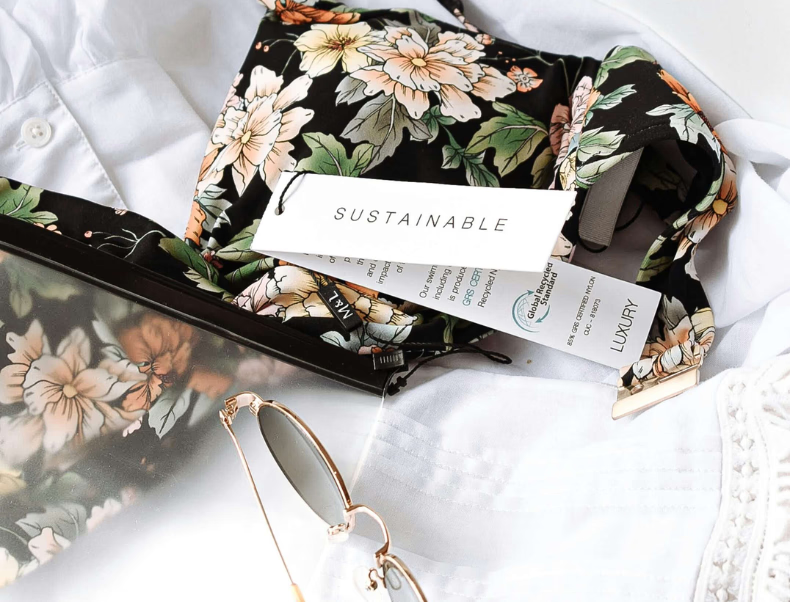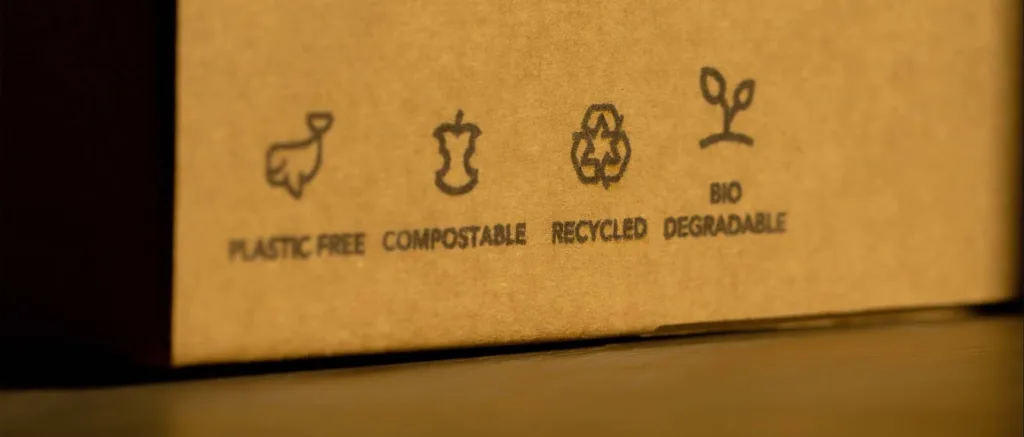Eco-Labels in Decision-Making

In today’s increasingly environmentally conscious world, consumers are becoming more aware of the environmental impact of the products they purchase. Eco-labels play a convenient role to help consumers identify the sustainable products they seek. From food to fashion and electronics, people are looking for ways to reduce their environmental impact to align their purchases with their personal values. Eco-labels offer transparency, guide purchasing decisions, and help companies communicate their environmental efforts effectively.
What Are Eco-Labels?
Eco-labels are marks or certifications placed on products to indicate they meet specific environmental standards and communicate environmental stewardship. These labels help consumers identify products that have a reduced impact on the environment, whether by using fewer resources, producing fewer emissions, or adhering to ethical sourcing practices. Common examples include certifications like Fair Trade, Energy Star, USDA Organic, and the Forest Stewardship Council (FSC) logo.
Eco-labels cover a wide range of sustainability aspects such as:
- Resource Efficiency: Energy Star for appliances that consume less energy.
- Sustainable Sourcing: FSC certification for responsibly sourced wood and paper.
- Emissions Impact: Carbon Trust Standard for products with reduced carbon footprints.
- Ethical Production: Fair Trade for ensuring fair wages and working conditions.

How Eco-Labels Influence Consumer Decision-Making
Eco-labels serve as an indicator that guides consumers toward more sustainable choices. Here’s how they affect purchasing decisions:
1. Credibility and Trust: Consumers are often skeptical of unsubstantiated claims regarding sustainability (often referred to as “greenwashing”). Eco-labels from reputable certifying bodies provide consumers with the assurance that the product genuinely meets specific environmental criteria.
2. Simplification of Complex Information: Sustainability can be a complex subject involving energy usage, water conservation, ethical labor practices, and more. Eco-labels indicate this information through a recognizable symbol or badge, making it easier for consumers to identify environmentally friendly options at a glance.
3. QR Codes for More Information: Some companies are leveraging technology like QR codes to provide consumers with detailed information such as the carbon footprint, water usage, origin of materials, and social responsibility practices of the product’s production. This allows for a more informed decision-making process without overwhelming the consumer with excessive packaging information.
4. Emission Transparency for Online Products: In the digital retail landscape, clear eco-labeling and emissions data are gaining traction. Some platforms now include information about a product’s carbon footprint, recyclability, and energy efficiency directly on product pages. This transparency empowers consumers to consider sustainability alongside price and quality when shopping online.
Benefits for Consumers
Eco-labels provide a multitude of advantages to consumers which increases the demand for sustainable products:
1. Informed Choices: Eco-labels equip consumers with the knowledge needed to make purchasing decisions that align with their values, particularly for those who prioritize reducing their environmental impact.
2. Positive Behavioral Influence: By consistently choosing eco-labeled products, consumers are actively participating in the shift towards a more sustainable economy. This positive reinforcement can drive further environmentally conscious behavior.
3. Health and Safety: Many eco-labels also reflect safer products, not only for the environment but also for human health. Certifications may indicate an elimination of harmful chemicals used in the product so consumers can choose products that are best for them.

Benefits for Companies
For companies, eco-labels offer both tangible and intangible benefits, encouraging the integration of sustainable practices into their operations:
1. Market Differentiation: With an ever-growing demand for sustainable products, companies that earn eco-label certifications can set themselves apart from competitors and become leaders in the industry. This differentiation can enhance brand reputation and attract a loyal customer base.
2. Customer Loyalty and Trust: Brands that are transparent about their sustainability efforts can build stronger relationships with customers. Substantiated eco-labels provide the credibility that reassures consumers that their product’s claims are validated.
3. Regulatory and Financial Incentives: In some regions, government incentives and subsidies are available for businesses that pursue sustainability certifications. Additionally, these efforts may help companies meet regulatory requirements that are increasingly emphasizing environmental responsibility.
4. Operational Efficiency and Cost Savings: Many eco-certifications require companies to adopt energy-saving practices, reduce waste, or use more sustainable materials. This can lead to long-term cost savings through reduced energy bills, less material waste, and streamlined production processes.
5. Brand Image and Corporate Social Responsibility (CSR): Eco-labels help companies to bolster their CSR or ESG initiatives, positioning them as leaders in sustainability. This not only enhances their public image but also helps attract investors who are looking for companies committed to ethical, sustainable, and resilient businesses.
The Future of Eco-Labels
As consumer demand for sustainability continues to grow, the role of eco-labels is expected to expand. Advances in technology will make it even easier for companies to access data, and in turn provide transparency to consumers. For instance, the use of AI technology used by CarbonBright automates the life cycle assessment (LCA) process, filling in data gaps, adapting to regional variations, and provides data to back sustainability claims in a scalable and cost effective way. As data, specifically supply chain data, becomes more readily available to companies, communicating the environmental impact of products will be more effective and common, whether through a certification label or a more detailed labeling method.
Moreover, governments and regulatory bodies are likely to introduce more stringent labeling requirements to fight greenwashing, like the EU Green Claims Directive, and ensure that sustainability claims maintain their integrity. The potential for international standardization of eco-labeling practices is also on the horizon, which could help streamline consumer decision-making across borders. For example, The International Organization for Standardization (ISO) is a reputable organization that has specific standards for that have been used to develop regulation.

Key Takeaways
As eco-labels become a critical factor in consumer decision-making, companies must recognize the importance of adopting them to meet growing sustainability demands. Implementing eco-labels can enhance brand reputation, attract eco-conscious consumers, and provide a competitive advantage in an increasingly sustainability-focused market.
To leverage eco-labels effectively, companies should focus on the following actionable steps:
1. Pursue Reputable Eco-Certifications: Obtain eco-label certifications that are relevant to your industry (e.g., Energy Star, Fair Trade, FSC). These labels will help build trust and credibility with consumers who prioritize sustainability.
2. Integrate Technology for Transparency: Use digital tools such as QR codes to provide detailed product information, such as carbon footprint, material sourcing, and sustainability practices. This added transparency enhances consumer confidence and can differentiate your brand.
3. Enhance Online Product Listings: Clearly display eco-labels and emissions data on product pages for e-commerce platforms. This enables consumers to easily factor sustainability into their purchasing decisions when shopping online.
4. Optimize Operations for Eco-Certification: Embrace the operational changes needed to meet certification standards, such as reducing energy consumption, waste, and emissions. These improvements not only make your products more appealing to eco-conscious consumers but can also result in cost savings.
5. Stay Ahead of Regulatory Changes: Monitor emerging regulations like the EU Green Claims Directive and be prepared to comply with future eco-labeling standards. Adopting eco-labels now can position your company as a proactive leader in sustainability.
By prioritizing eco-labels, companies can be beneficial for both consumers and the company themselves. Not only do eco-labels enable brands to appeal to the growing demand for sustainable products, but they also help build long-term consumer loyalty and trust. In addition, by aligning with emerging regulatory standards and incorporating eco-friendly operational practices, companies can reduce costs, boost their public image, and contribute positively to environmental goals. Stakeholders are increasingly expecting businesses to take sustainability seriously and embracing eco-labels is a strategic move toward future growth and resilience.
Next Steps: Benefitting from Eco-Labels
CarbonBright’s AI-powered LCA software helps organizations accurately measure emissions and meet regulatory standards—at a fraction of the time and cost of traditional methods.
Contact us to get started!



